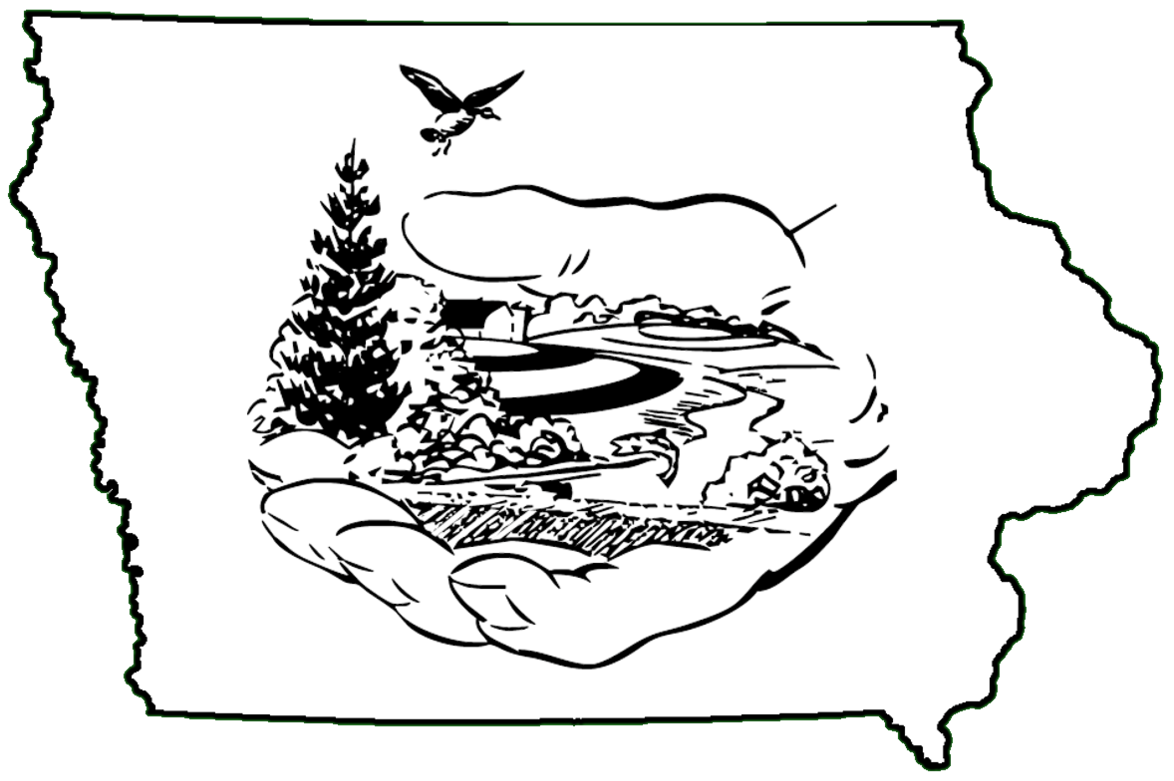Download: Urban Best Management Practices
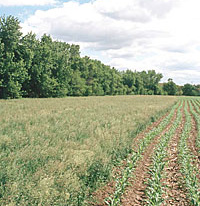
Filter Strips
Strips of grasses, trees, and shrubs slow water flow and cause contaminations like sediment, chemicals and nutrients to collect in vegetation. Collected nutrients and chemicals are absorbed by the vegetation, rather than entering water supplies. Filtered water then enters water bodies.
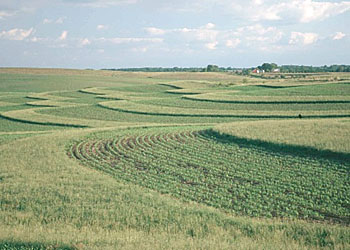
Contour Buffer Strips
A series of grass strips are placed along the contour of a slope. The alternating strips of grass or other permanent vegetation slow runoff flow, trap sediment from the crop strips above, and increase water infiltration. Because the buffer strip is established on the contour, runoff flows evenly across the entire surface of the grass strip, reducing sheet and rill erosion.
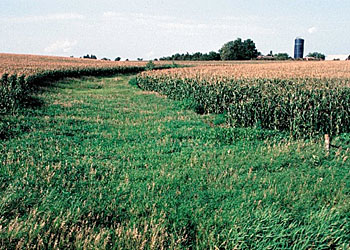
Grassed Waterways
A natural drainage way is graded and shaped to form a smooth, bowl-shaped channel. This area is seeded to sod-forming grasses. Runoff water flows down the drainage way and across the grass rather than tearing away soil and forming a larger gully. An outlet is often installed at the base of the drainage way to stabilize the waterway and prevent a new gully from forming.
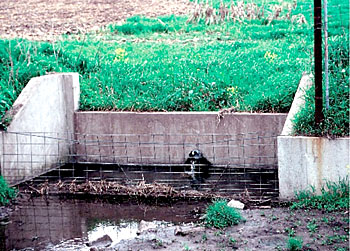
Grade Stabilization Structures
A dam, embankment, or other structure is built across a grassed waterway or existing gully to control and reduce water flow. The structure drops water from one stabilized grade to another and prevents gullies from advancing up a slope. If it is planned to store water, a grade control structure may provide a water source and habitat for wildlife.
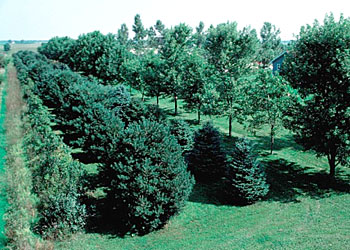
Windbreaks
Multiple rows of coniferous trees and shrubs planted to protect a farmstead or feedlot from wind and snow. The established windbreak slows wind for a distance of 10 times the height of the trees. The tree rows also act like a snow fence, trapping snow within the windbreak and between the windbreak and the buildings. Windbreaks can also be planted along field edges to reduce wind speed in open fields.
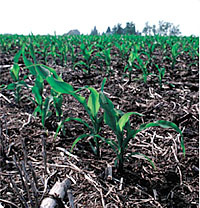
No Till
Planting into last year’s untilled crop residue reduces soil erosion, improves water quality, and increases soil organic matter.
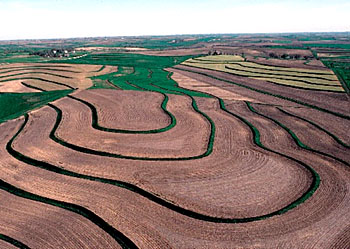
Contour Farming
Contouring can reduce soil erosion by as much as 50% from up and down hill farming. By reducing runoff, and increasing water infiltration, contouring promotes better water quality.
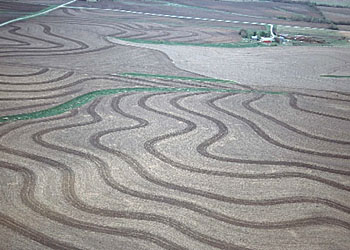
Terraces
Break long slopes into shorter ones. They usually follow the contour. As water makes its way down a hill, terraces serve as small dams to intercept water and guide it to an outlet.
There are two basic types of terraces—storage terraces and gradient terraces. Storage terraces collect water and store it until it can infiltrate into the ground or be released through a stable outlet. Gradient terraces are designed as a channel to slow runoff water and carry to a stable outlet like a grassed waterway.
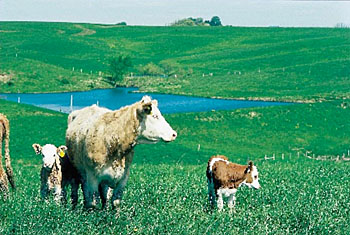
Ponds
A typical farm pond is formed by building a dam across an existing gully or low lying area. Earth for the dam is dug out above the dam with heavy machinery to form a bowl. Generally the pond area fills with water within a year. An overflow pipe is installed through the dam to control the water level and allow water to spill through the dam without causing erosion.
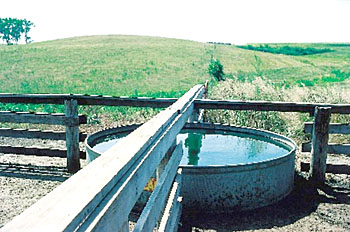
Rotational Grazing
Pasture is divided into two or more pastures or paddocks with fencing. Cattle are moved from paddock to paddock on a pre-arranged schedule based on forage availability and livestock nutrition needs.
Rotational Grazing Systems improve vegetative cover, reduce erosion, increase wildlife use of pastures, and improve water quality.
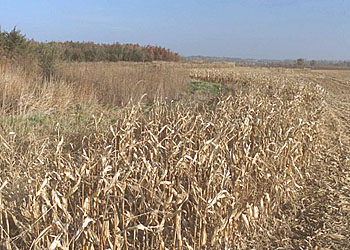
Food Plots
Food plots may be established either within an existing crop field or in a separate location. You may simply leave rows of corn standing after harvest to provide food for wildlife over the winter, or you may plant a small plot elsewhere. These plots help wildlife through the winter when food supplies are in short supply.
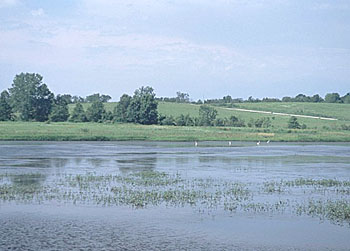
Wetlands
Wetlands serve a number of functions including filtering nutrients and chemicals from runoff water, and providing wildlife habitat.
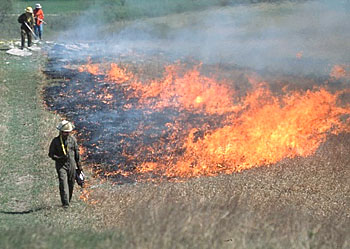
Prescribed Burns
Prescribed burning is a conservation practice where fire is applied to a pre-determined area within a prescribed set of conditions, dates and with appropriate safety precautions to achieve specific purposes.
Prescribed fires can be applied to prairie, timber, savannah, or pasture.
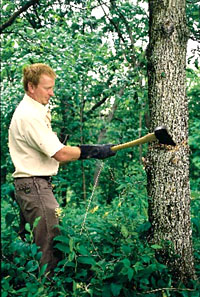
Timber Stand Improvement
& Brush Clearing
Timber Stand Improvement: Removing unwanted trees from timber allows more sunlight to reach desirable trees and increases regeneration.
Brush Clearing: Removing unwanted woody growth from grasslands such as prairies, savannahs, or pastures helps maintain quality plant health.
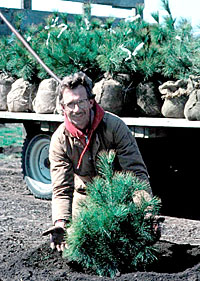
Tree Plantings
A variety of desired tree species, either seedlings or seeds, are planted mechanically or by hand in under-stocked woodlands or open fields. Tree species are matched with soil types and selected to prevent soil erosion, increase income, or boost productivity of existing woodland.
Ground cover created by trees and associated debris protects soil from rill and sheet erosion. Ground cover also protects water quality by filtering excess nutrients and chemicals from surface runoff and increasing infiltration rates.
Photos Courtesy of Natural Resources Conservation Service
